Entertainment
The Future of Music: Will AI Singing Voice Generators Take Over the Charts?

Have you ever thought considered what the future of music will look like? Well, these days, it’s hard not to worry if AI will be calling the shots. We’re in a world where AI singing voice generator are growing so advanced, it’s making me question what’s even going to happen to actual human musicians, and what we genuinely mean by music in the first place. I’m basically trying to wrap my brain around it all.
We’re not simply talking about AI technologies that aid with mixing and mastering anymore. We’re already talking about AI singing voice technologies that can compose unique music, write lyrics, and even sing with astonishing precision. I mean, it’s like, where will it stop? It just makes me think that everything is going to change.
The Promise and the Peril
On one hand, I see why people are so delighted about all this, right? I mean, singing AI has the ability to open up new creative possibilities for everyone. It feels like it might provide so many new artists the chance to have their voices heard. To a large extent, it is a novelty — it is easy to concentrate on all the new technologies.
But then again, you really have to wonder, the scenario of true musicians creating music. I mean, if AI singing voice generation becomes that dominating, what’s going to happen to their jobs? And what’s going to happen to human creativity? I mean, if AI can do it all, where does that leave the humans? It’s a bit frightening, isn’t it?
The Changing Landscape of Music
It’s hard not to think about the ways that this may impact the whole music industry:
Originality: Will music merely become a succession of algorithms? Where will the human connection originate from?
Authenticity: Will we even be able to identify what’s real and what’s not? It simply makes you ponder what it will all mean to us.
Ownership: Who will own the music? Will it be the artists, or will it be the tech firms who built the AI?
And there are probably so many additional questions that I’m not even thinking about.
So, what do we do about this? It’s not like we can just ignore it. I think we need to start supporting human artists, and continue to appreciate the music that we’ve all come to adore. We also really need to be mindful about how we employ AI in music. But, thank God, it appears that more than ever we need a serious discussion about the ethics of it all. I feel like we’re at that crossroads here and it’s just not the same as it used to be.
It is such a complex area that, and it is one that could leave me bankrupt since I don’t have the answers. I am just like all these others, I am just trying to make something out.
Speaking about finding it out… Why did the AI create a band? It wants to compose itself!
Read More:wordiply
Celebrity
Jonathan Hardy: A Talented Voice in New Zealand-Australian Cinema
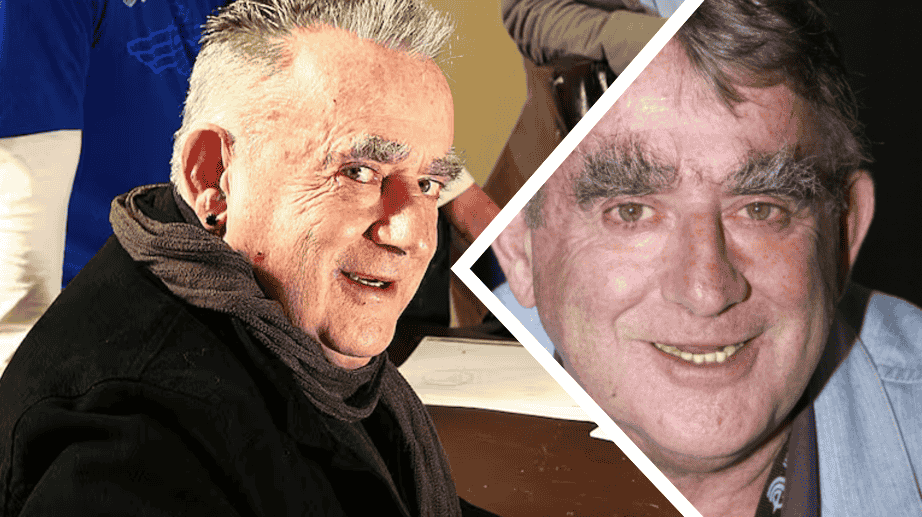
Jonathan Hardy was born on September 20, 1940, in Wellington, New Zealand. Growing up in a city brimming with natural beauty and cultural diversity, Hardy’s formative years laid the groundwork for his creative pursuits. Despite the relative isolation of New Zealand in the mid-20th century, Hardy was drawn to storytelling from a young age. His parents, though not directly involved in the arts, encouraged his curiosity and appreciation for literature, performance, and creative expression.
While little is documented about his immediate family, their support played a crucial role in nurturing his ambitions. Hardy’s passion for acting took root during his school years, where he often participated in plays and debates. His early exposure to performance art cultivated his sense of drama and character, ultimately leading him to pursue a career that would bridge both the New Zealand and Australian entertainment industries.
Transition to Acting: Breaking Into Film and Television
Jonathan Hardy began his professional acting journey in New Zealand, but his talents soon earned him opportunities across the Tasman Sea in Australia. Hardy’s adaptability and compelling stage presence made him a sought-after performer in both nations. He balanced theater, television, and film roles with remarkable ease, showcasing his versatility as an actor.
One of Hardy’s most notable early achievements came in the form of collaborations with esteemed theater companies. His deep, resonant voice and commanding demeanor were tailor-made for dramatic roles, though he also demonstrated an aptitude for comedy. These theatrical successes eventually opened doors to film, where Hardy found a new medium to express his talents.
Hardy’s film debut occurred during the 1970s, a decade marked by significant growth in Australasian cinema. He quickly became recognized for his ability to bring layered, nuanced characters to life, establishing himself as an actor of great depth and authenticity. Among his early film credits were smaller yet impactful roles that hinted at his potential for greatness.
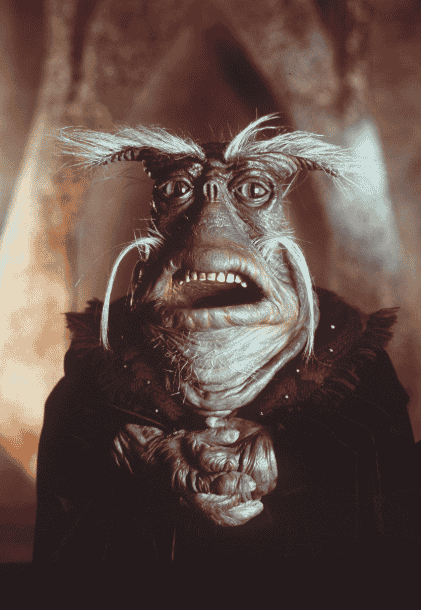
Career Highlights: A Multifaceted Artistic Legacy
Jonathan Hardy’s career is best remembered for his remarkable contributions to film, both in front of and behind the camera. One of his most iconic performances was his role as a voice actor in the critically acclaimed Australian animated film The Plague Dogs (1982). Hardy provided the voice for Rowf, a canine protagonist, imbuing the character with a raw emotional depth that resonated with audiences. His performance in this film remains a testament to his ability to convey complex emotions through voice alone.
Hardy also made a significant mark as a screenwriter. His most notable screenplay credit came with the 1980 film Breaker Morant, a historical drama that explored the moral complexities of war. Co-written with Bruce Beresford and David Stevens, the film garnered international acclaim, earning an Academy Award nomination for Best Adapted Screenplay. Hardy’s contribution to Breaker Morant solidified his reputation not only as a skilled actor but also as a talented writer capable of crafting compelling narratives.
Beyond his cinematic achievements, Hardy was a frequent presence on television, where his guest appearances on popular series showcased his ability to adapt to various roles and genres. Whether portraying historical figures, eccentric characters, or everyday individuals, Hardy brought a level of authenticity and charisma that left a lasting impression.
Family and Personal Life: A Quiet but Meaningful Existence
Jonathan Hardy was known for maintaining a relatively private personal life, preferring to let his work speak for itself. While he did not often discuss his family in public interviews, those close to him described him as a deeply compassionate and thoughtful individual. Hardy’s commitment to his craft was matched by his dedication to the people he cared about, though he kept the details of his relationships largely out of the public eye.
Hardy’s reserved nature belied his vibrant personality, which was often expressed through his work. Colleagues and friends remember him as someone with a sharp wit and a generous spirit. His ability to forge genuine connections with others was evident both on and off set, earning him the respect and admiration of his peers.
While there is limited information about his immediate family or children, Hardy’s legacy lives on through his extensive body of work. His personal and professional relationships painted a picture of a man who valued authenticity and creativity above all else.
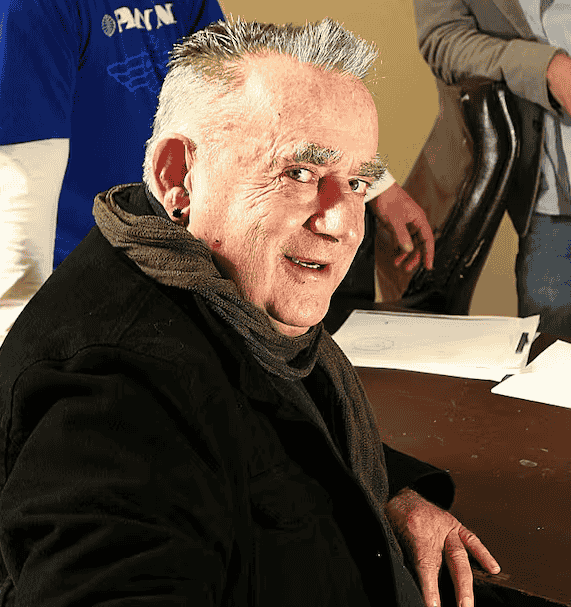
A Lifetime of Achievements: Awards and Recognitions
Throughout his career, Jonathan Hardy earned accolades that reflected his immense contributions to the arts. His role in Breaker Morant was particularly significant, as the film not only achieved critical acclaim but also served as a milestone in Australian cinema. The Academy Award nomination for Best Adapted Screenplay was a career-defining moment, bringing Hardy international recognition for his writing prowess.
Hardy’s voice acting in The Plague Dogs remains one of his most celebrated performances, earning him widespread praise for his ability to evoke emotion and empathy through animation. This performance showcased his versatility and underscored his importance to Australasian cinema.
In addition to these specific achievements, Hardy’s work as a character actor in television and theater cemented his reputation as a reliable and talented performer. While he may not have always taken center stage, his contributions to each project were integral to its success, earning him the respect of critics and audiences alike.
Legacy and Impact: Remembering Jonathan Hardy
Jonathan Hardy passed away on July 30, 2012, at the age of 71. His death marked the end of a remarkable career that spanned multiple decades and mediums. Hardy left behind a legacy defined by artistic integrity, versatility, and a passion for storytelling.
As both a performer and a creator, Hardy’s work continues to inspire actors, writers, and filmmakers in New Zealand and Australia. His contributions to Breaker Morant alone stand as a testament to his ability to tackle challenging and morally complex narratives, while his performances in films like The Plague Dogs highlight his emotional depth and versatility.
Beyond his professional accomplishments, Hardy is remembered as a pioneer who helped elevate the profile of Australasian cinema on the global stage. His work encouraged future generations of artists to pursue their craft with the same dedication and authenticity that he embodied.
Conclusion
Jonathan Hardy was a multifaceted artist whose contributions to New Zealand and Australian cinema remain significant to this day. From his early days in Wellington to his rise as an actor, writer, and director, Hardy’s career reflected his deep commitment to storytelling in all its forms. Whether through his compelling performances, his evocative voice work, or his powerful screenplays, Hardy left an indelible mark on the entertainment industry.
Though he preferred a life away from the limelight, Hardy’s work continues to resonate with audiences and artists alike. His legacy serves as a reminder of the power of passion and creativity, ensuring that his contributions to cinema will not be forgotten.
FAQs
Who was Jonathan Hardy?
Jonathan Hardy was a New Zealand-born actor, screenwriter, and director who achieved prominence in both New Zealand and Australian cinema. He is best known for co-writing Breaker Morant and for his voice work in The Plague Dogs.
What was Jonathan Hardy’s most famous role?
Hardy is perhaps most famous for his voice performance as Rowf in the animated film The Plague Dogs and for his screenwriting work on the critically acclaimed Breaker Morant.
Did Jonathan Hardy win any awards?
While Hardy did not win major awards personally, he received an Academy Award nomination for Best Adapted Screenplay for his work on Breaker Morant.
What is Jonathan Hardy’s legacy?
Hardy is remembered as a talented actor and writer who made significant contributions to Australasian cinema, helping to elevate its profile on the international stage.
When did Jonathan Hardy pass away?
Jonathan Hardy passed away on July 30, 2012, at the age of 71.
What genres did Jonathan Hardy work in?
Hardy’s career spanned drama, historical films, animation, and television, showcasing his versatility as an actor and writer.
Entertainment
Dora Paskel: The Real-Life Inspiration Behind Popeye’s Olive Oyl

Dora Paskel, a towering and angular figure of her time, remains an intriguing historical character largely because of her association with one of pop culture’s most iconic cartoon figures—Olive Oyl from the Popeye series. Dora Paskel, who managed a general store in her hometown, unknowingly became a muse for the cartoonist Elzie Crisler Segar, the creator of Popeye. Her distinctive physical characteristics, mannerisms, and even her choice of hairstyle inspired Segar’s creation of the tall, slender, and somewhat quirky Olive Oyl.
In this article, we will explore the fascinating life of Dora Paskel, delve into her relationship with Segar, and uncover how her everyday life laid the foundation for an enduring cultural icon.
Dora Paskel: A Unique Figure of Her Era
Dora Paskel was an uncommonly tall woman with angular features, a rarity for her time. Her appearance naturally caught the attention of people in Chester, Illinois, the small town where she lived and worked. In addition to her height, one of her most memorable traits was her signature hairstyle—a neatly coiled hair bun positioned low at the nape of her neck, a look that would later become synonymous with Olive Oyl.
Dora ran a general store in town, a central hub where townsfolk gathered to shop and exchange news. She was known for her no-nonsense attitude, witty humor, and a certain eccentricity that made her a memorable figure. Her mannerisms, combined with her unique appearance, captured the imagination of Elzie Segar, who lived in Chester and would often observe local characters for inspiration.
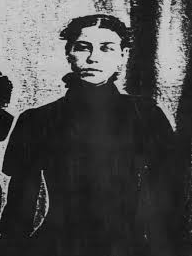
Elzie Segar: Transforming Reality into Art
Elzie Segar, a Chester native, had a knack for weaving real-life figures into his comic creations. Before creating Popeye, Segar started with a strip called Thimble Theatre, where Olive Oyl first appeared.
When Segar created Olive Oyl in 1919, it was said that he drew inspiration directly from Dora Paskel. Segar was known for spending hours sketching people he saw in Chester, and Dora’s strikingly unique physical features and sharp personality made her a natural muse. Though some artistic liberties were taken, such as exaggerating Olive’s features for comic effect, the resemblance to Dora was unmistakable to those who knew her.
It wasn’t just Dora’s looks that influenced Olive Oyl’s creation—her independent and spirited personality also translated into Olive’s character. Like Dora, Olive Oyl was portrayed as resourceful, witty, and sometimes hilariously dramatic.
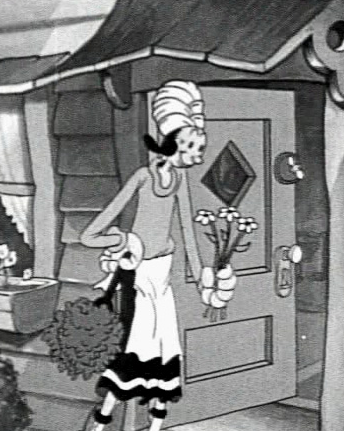
The General Store: A Hub of Local Culture
Dora Paskel’s general store was more than just a place for purchasing necessities—it was the social heart of Chester. Her customers included people from all walks of life, and Dora’s sharp wit often made her the center of attention.
Elzie Segar likely spent a significant amount of time in the general store, either shopping or observing its lively environment. He may have noted Dora’s distinctive walk, her exaggerated gestures, or even her particular way of speaking, all of which contributed to Olive Oyl’s eccentricities. Dora’s position as a storekeeper also echoed Olive Oyl’s depiction as a woman who juggled various responsibilities with a mix of charm and exasperation.
Dora Paskel’s Family and Personal Life
While Dora Paskel’s public persona as a tall, angular shopkeeper is well-documented, less is known about her private life. It is believed she lived a modest, single life in Chester, dedicated to running her business. Although there are no records indicating that she married or had children, her close ties to the community suggest she had a strong support network.
Dora’s family background remains a mystery, but her connection to the townsfolk of Chester effectively made her part of a larger “family.” Her enduring legacy as Olive Oyl’s inspiration reflects the powerful, albeit indirect, relationships she forged with both Segar and the wider world.
Legacy: Dora Paskel’s Place in Pop Culture
Though Dora Paskel never sought fame, her unintentional role as the inspiration behind Olive Oyl has made her an enduring figure in American pop culture. Popeye and its characters have been beloved for over a century, and Olive Oyl, in particular, stands out as a strong, independent female figure.
Even today, Olive Oyl’s quirky personality, resilience, and distinctive look continue to capture the hearts of audiences worldwide. This lasting legacy speaks to the strength of Dora Paskel’s influence, proving that even ordinary lives can inspire extraordinary creations.
Conclusion: Remembering Dora Paskel’s Impact
Dora Paskel’s life may have seemed ordinary on the surface—a woman managing a general store in a small town—but her unique presence left a profound mark on pop culture. Through Elzie Segar’s imaginative lens, she became immortalized as Olive Oyl, one of the most recognizable characters in animation history.
By embracing her quirks, standing tall (literally and figuratively), and making an impression on those around her, Dora Paskel reminds us that the most unexpected individuals can inspire greatness. Her story is a testament to how the ordinary can become extraordinary when seen through the eyes of an artist.
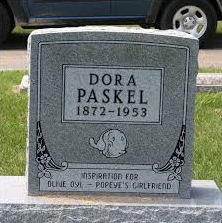
FAQs About Dora Paskel and Olive Oyl
1. Was Dora Paskel aware that she inspired Olive Oyl?
While it is believed that Dora Paskel inspired Olive Oyl, there is no definitive record of whether she was aware of this connection. Since she lived in the same town as Elzie Segar, she might have known, but her reaction remains unknown.
2. What specific traits of Dora Paskel inspired Olive Oyl?
Dora’s towering height, angular frame, signature low hair bun, and her sharp, independent personality were key traits that inspired Olive Oyl’s design and character.
3. Did Dora Paskel have any connection to the Popeye franchise beyond Olive Oyl?
No, Dora Paskel’s influence was primarily as the real-life muse for Olive Oyl. There’s no evidence of further involvement with the franchise.
4. Where is Dora Paskel buried?
Details about Dora Paskel’s final resting place are not widely documented. However, it is likely she is buried in or near Chester, Illinois, where she lived her life.
5. How did Olive Oyl evolve after Dora Paskel?
When Paskel provided the initial inspiration for Olive Oyl, the character evolved over time through various comic strips, animated series, and films. Olive’s personality and storyline were expanded, making her a more dynamic character.
6. Why is Paskel significant today?
Paskel’s legacy lies in her unintentional contribution to pop culture. As the inspiration for Olive Oyl, she reminds us of the powerful role that everyday people can play in shaping iconic art and storytelling.
Entertainment
The Role of Adria Nicole Brown at Dartmouth

Adria Nicole Brown stands as a pivotal figure in Dartmouth College’s commitment to fostering inclusivity and equity. Serving as the Director of the Native American Program (NAP), she is instrumental in providing guidance and creating spaces where Native and Indigenous students thrive both academically and personally. Through her leadership, Brown has transformed the program into a dynamic hub that celebrates cultural heritage while addressing the unique challenges faced by these communities in higher education.
Her work extends far beyond administrative duties, emphasizing collaboration with the Department of Native American and Indigenous Studies (NAIS) and Residential Education. By spearheading initiatives like the Native American House, she not only enhances campus life but also strengthens the bond between tradition and modern academic pursuits.
A Vision for Holistic Development
At the heart of Brown’s leadership lies her unwavering dedication to the holistic development of Native and Indigenous students. She recognizes that higher education can often be a challenging journey, especially for students from underrepresented communities. To address this, Brown integrates cultural identity with academic excellence, ensuring that students feel supported in every aspect of their Dartmouth experience.
Her approach includes:
- Educational Guidance: Assisting students in navigating rigorous academic environments while remaining rooted in their cultural identities.
- Cultural Enrichment: Organizing programs that highlight the traditions, histories, and contemporary issues of Native communities.
- Personal Growth: Providing mentorship and creating safe spaces where students can explore their aspirations without fear of judgment.
This multifaceted focus makes her work invaluable to both individuals and the larger Dartmouth community.
Strengthening Community through the Native American House
One of Adria Nicole Brown’s most notable contributions is her role as the program advisor for the Native American House, a residential affinity house. This space is more than just a dormitory—it is a sanctuary where students can connect with their heritage, build meaningful relationships, and engage in dialogues that matter.
By collaborating closely with Residential Education, Brown ensures that the Native American House reflects the values of inclusivity and respect. The house hosts cultural events, community gatherings, and discussions that encourage students to share their stories and learn from one another. For many, it becomes a cornerstone of their college experience, fostering a sense of belonging that can be transformative during their time at Dartmouth.

Collaboration with the Department of Native American and Indigenous Studies
A key aspect of Brown’s success lies in her partnership with the Department of Native American and Indigenous Studies (NAIS). Together, they bridge academic and extracurricular efforts to create a comprehensive support system for students.
Brown works hand-in-hand with faculty to align program goals with the department’s mission. This collaboration ensures that students have access to:
- Innovative Curricula: Courses that explore Indigenous perspectives and provide tools for addressing pressing issues such as sovereignty, environmental justice, and cultural preservation.
- Research Opportunities: Programs that empower students to conduct research on topics relevant to their communities.
- Cultural Competency Workshops: Sessions aimed at educating the broader Dartmouth community about Indigenous histories and challenges.
Through these initiatives, Brown not only enhances student outcomes but also strengthens Dartmouth’s reputation as a leader in Native and Indigenous education.
Challenges and Triumphs in Supporting Native Students
Adria Nicole Brown’s role is not without its challenges. Native and Indigenous students often face systemic barriers, including:
- Cultural Disconnection: The struggle to balance traditional values with the demands of a predominantly Western academic framework.
- Financial Hardships: Limited access to resources that make higher education attainable and sustainable.
- Representation Gaps: A lack of visibility and understanding of Native and Indigenous experiences within mainstream campus life.
Despite these hurdles, Brown’s leadership has led to several triumphs. Her advocacy has resulted in increased funding for programs, more robust cultural celebrations, and a growing sense of community among Native students. Her ability to navigate institutional systems and amplify student voices is a testament to her commitment and skill.

The Future of the Native American Program
Under Adria Nicole Brown’s guidance, the Native American Program continues to evolve. Looking ahead, her vision includes:
- Expanding Outreach: Building stronger connections with tribal communities to encourage more Native students to consider Dartmouth as a viable and welcoming option.
- Enhancing Resources: Advocating for scholarships, grants, and academic support tailored to Indigenous needs.
- Promoting Leadership: Encouraging students to take on leadership roles, both within and beyond Dartmouth, to represent Native voices on a larger stage.
By integrating traditional practices with innovative strategies, Brown ensures that the program remains relevant and impactful for generations to come.
Conclusion: A Legacy of Leadership and Advocacy
Adria Nicole Brown exemplifies the qualities of a leader who not only inspires but also actively uplifts those she serves. Her work as Director of the Native American Program has had a profound impact on Dartmouth College, setting a standard for how institutions can support underrepresented communities. Through her dedication, she has created a model of inclusivity that others can emulate, ensuring that Native and Indigenous students feel seen, valued, and empowered to achieve their dreams.
FAQs
What is Adria Nicole Brown’s role at Dartmouth?
Adria Nicole Brown is the Director of the Native American Program, where she oversees initiatives that support the educational, cultural, and personal development of Native and Indigenous students.
What is the Native American House at Dartmouth?
The Native American House is a residential affinity space where students can connect with their heritage, participate in cultural events, and build a supportive community. Brown serves as its program advisor.
How does Brown collaborate with the Department of Native American and Indigenous Studies?
Brown partners with the department to align program goals with academic curricula, offering students access to innovative courses, research opportunities, and workshops on Indigenous issues.
What challenges do Native and Indigenous students face at Dartmouth?
Students often encounter cultural disconnection, financial hardships, and representation gaps. Brown addresses these challenges through mentorship, advocacy, and resource development.
What is the future vision for the Native American Program?
Brown aims to expand outreach, enhance resources, and promote leadership among Native and Indigenous students, ensuring the program’s continued growth and impact.
-

 Celebrity7 months ago
Celebrity7 months agoBailey Zimmerman’s Net Worth in 2024: A Look at His Earnings
-

 Business9 months ago
Business9 months agoIs Bolt Cheaper Than Uber? Comparing Ride-Hailing Prices and Services
-

 Celebrity8 months ago
Celebrity8 months agoWho Is Charlotte Tilbury: The Visionary Behind a Global Beauty Empire
-

 Fashion4 months ago
Fashion4 months agoHow to Choose the Right Shade of Green for Your Skin Tone
-

 Celebrity8 months ago
Celebrity8 months agoJohn Summit Net Worth: A Rising Star in the Music Industry
-

 Celebrity6 months ago
Celebrity6 months agoCaseOh’s Financial Success in 2024: Net Worth, Income Streams & More
-

 Celebrity6 months ago
Celebrity6 months agoExploring the Life of Andrew Shingange: Trevor Noah’s Brother and an Advocate for Change
-

 Sports6 months ago
Sports6 months agoWho Is Tyla Ochoa? All About Sam Hartman’s Girlfriend – Family, Career, and Personal Life


